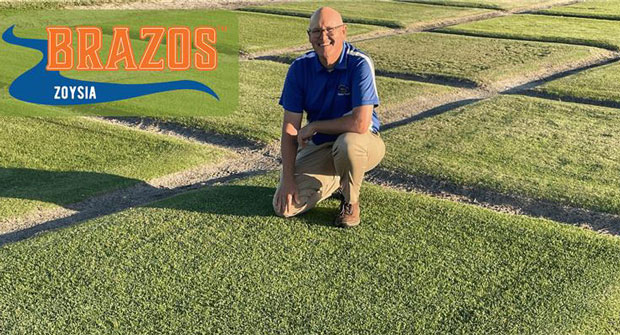The University of Florida’s Turfgrass Breeding Program developed the Brazos zoysiagrass (FAES 1319), an improved grass variety for the southern half of the United States, extending the reach of warm-season zoysias north. Brazos is a medium-fine-bladed zoysia featuring drought resistance, early spring green-up and fall color retention. It offers disease resistance, shade and cold tolerance and the ability to withstand higher salt content. Brazos provides a dense turfgrass ideal for home lawns, parks, golf courses and commercial applications.
The distinctive plant was discovered in 2006 during a family outing in the Florida Everglades. It was the only one among a sea of zoysiagrass that displayed the leaf texture typical of Zoysia japonica. Initially labeled Glades #4 and later UFZ11, it entered the National Turfgrass Evaluation Program (NTEP) as FAES1319 in 2013 and 2019.
Dr. Kevin Kenworthy, a professor in the UF/IFAS agronomy department, highlighted Brazos’ journey through extensive trials at Texas A&M, Oklahoma State, the University of Georgia and North Carolina State. Brazos demonstrated persistence under drought conditions, retaining quality during dry periods and recovering quickly with rain or irrigation. The plant’s resilience and performance in various environments positioned it as a top performer in two NTEP trials, consistently ranking high for turf quality, drought and disease resistance, winter color retention and overall consistency.
“Brazos was one of the best-performing lines trialed throughout Florida, excelling in establishment, drought tolerance, winter color retention and consistent performance,” said Dr. Kenworthy.
The plant provides drought and shade tolerance, making it an ideal choice for sod producers and end-users. Its ability to maintain color in the spring and fall, combined with salt tolerance, distinguishes Brazos as a turfgrass variety.


